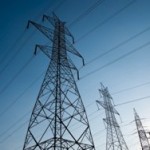 Bangalore / San Francisco – The current explosion in cloud computing offered by major IT companies is driving significant new demand for dirty energy like coal and nuclear power, according to a new report from Greenpeace International.
Bangalore / San Francisco – The current explosion in cloud computing offered by major IT companies is driving significant new demand for dirty energy like coal and nuclear power, according to a new report from Greenpeace International.
The report, “How Clean is Your Cloud?”, (1) shows a growing split within the tech industry between companies that are taking steps to power their cloud computing infrastructures with clean energy, like Google, Yahoo! and Facebook, and companies like Apple, Amazon and Microsoft who lag behind by choosing to build their growing fleets of data centres to be powered by coal and nuclear energy. (2)
The report evaluates 14 major IT companies and their electricity supply chains of over 80 data centres based on key elements needed to build a clean cloud computing infrastructure. (3)
“When people around the world share their photos or music on the cloud, they want to know that the cloud is powered by clean, safe energy,” said Mrinmoy Chattaraj, Campaigner Greenpeace India. “Yet highly innovative and profitable companies like Apple, Amazon and Microsoft are building their data centres powered by dirty sources of energy like coal and diesel, and acting like their customers won’t know or won’t care. They’re wrong.”
As more people around the world use the cloud to store and share photos, videos, and documents, IT companies have to build more data centres – buildings so large they are often visible from space – that house thousands of computers and consume tremendous amounts of electricity. These cloud data centers consume a tremendous amount of electricity; some consume the equivalent of nearly 180,000 US homes or close to 1.8 million Indian homes (4). If the cloud were a country, its electricity demand would currently rank 5th in the world, which is ahead of India’s total electricity demand and this is expected to triple by 2020.
“While many IT companies have made great strides in efficiency, that’s only half the picture – they need to make sure their energy comes from clean sources,” said Gary Cook, Greenpeace International Senior Policy Analyst.
Companies like Google, Yahoo! and Facebook are beginning to lead the sector down a clean energy pathway through innovations in energy efficiency, prioritizing renewable energy access when siting their data centres, and demanding better energy options from utilities and government decision-makers. Both Google and Yahoo! are increasingly powering their facilities with renewable energy even as they continue to expand. Facebook has now also stepped forward to lead the way to a cleaner cloud through its ongoing efforts to share energy efficiency technology through its OpenCompute Initiative, and also with the announcement of a new siting policy in December that prioritizes clean energy for its infrastructure.
Unfortunately, the majority of the industry has refused to follow the lead of those pioneers. Greenpeace International is calling on all IT companies with cloud services to:
- Be more transparent about their energy usage and carbon footprint, and to share innovative solutions so that the rest of the sector can improve;
- Develop a siting policy that demonstrates a preference to build data centres in areas where clean energy will power the facility;
- Invest in or directly purchase renewable energy;
- Demand that governments and electric utilities increase the amount of renewable electricity available on the grid.
Notes:
(1) Greenpeace previously evaluated the industry’s cloud computing in its 2011 report, “How Dirty is Your Data?”
(2) Greenpeace calculates companies’ energy demand and grid mix based on submissions by companies directly to Greenpeace International; as defined by companies when announcing investments; as reported by the media (in stories on the investment in or construction of facilities, etc.). Greenpeace International derived electricity demand by taking the announced size of investment and deriving total number of megawatts (MW) using industry average cost per IT load ($15m US dollars per IT MW, unless reported as lower) multiplied by publicly available power usage effectiveness (PUE) for the facility, or, if not available, PUE of 1.5 for new facilities. If not announced by the company, renewable electricity percentage is taken from one of the following sources, as available, in declining order of preference: the most recent published electricity mix of the local utility; in the US, 2007 eGrid State level generation mix as reported by US EPA, or if not applicable, reported sub-regional eGrid generation mix; outside the US: the European Commission and International Energy Agency 2008/09 statistics.
(3) Cloud computing is a way of storing and sharing data on the Internet. The cloud allows users to share data like photos, music and documents on the Internet instead of using software or storage on a local computer.
(4) The average power consumption of 1 house in US is equal to 10 average Indian houses.
Source: Greenpeace.














